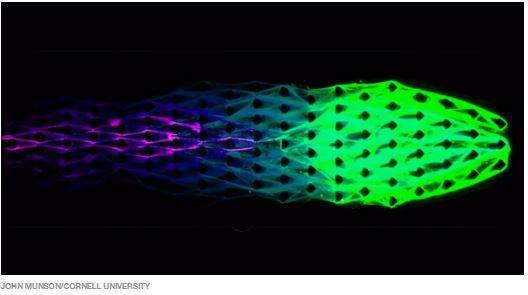A new biomaterial built in a Cornell University bioengineering lab uses synthetic DNA to continuously and autonomously organize, assemble, and restructure itself in a process so similar to how biological cells and tissues grow that the researchers are calling “artificial metabolism,” according to research published in Science Robotics.
The biomaterial mimics a biological organism’s endless metabolic cycle of taking in energy and replacing old cells. When placed in a nutrient-rich environment, the material grew in the direction of the raw materials and food it needed to thrive — not unlike how a developing brain’s neurons grow out in the direction of specific molecules.
Meanwhile, the material also let its tail end die off and decay, giving the appearance of a constantly-regrowing slime mold traveling around toward food.
While the little bio-blob isn’t alive, it does appear to move and grow like a living thing, suggesting that scientists are blurring the line between life and machine more and more.

